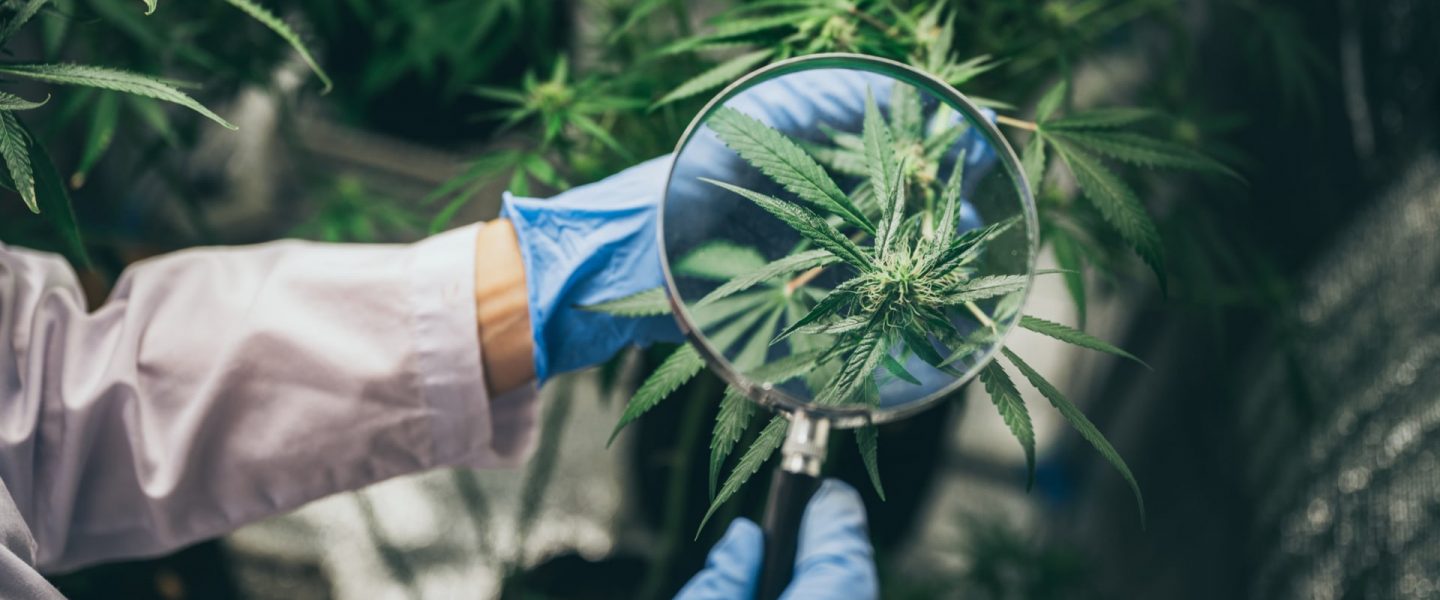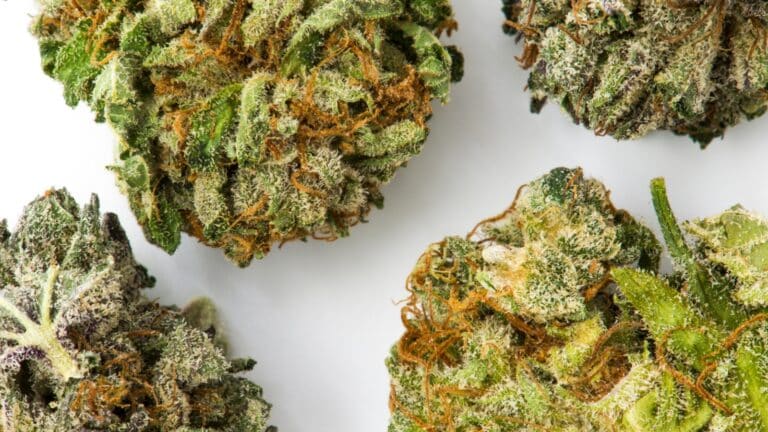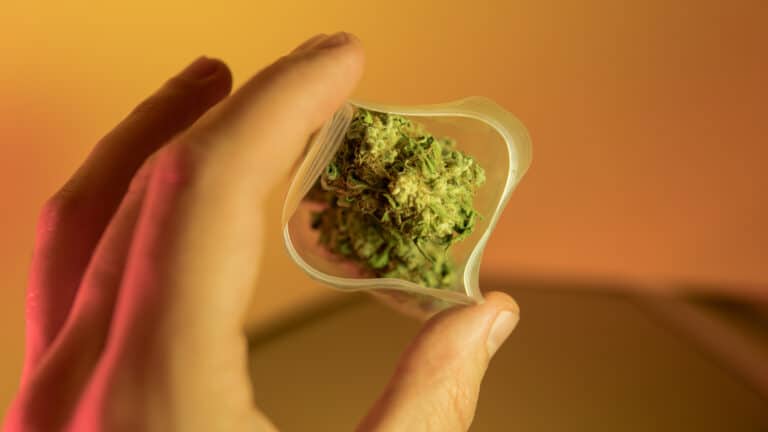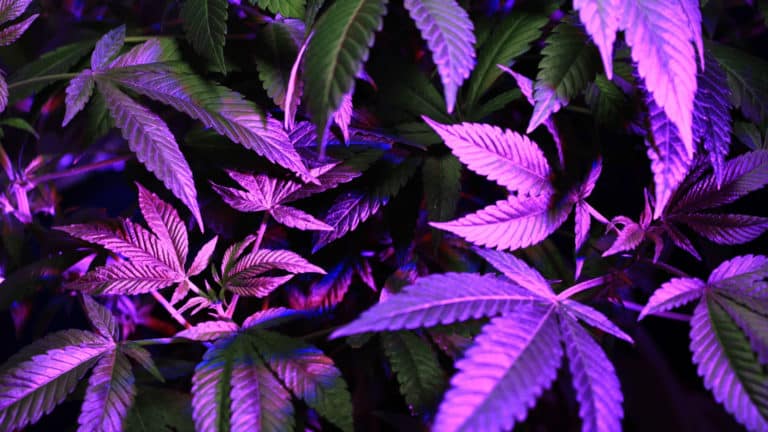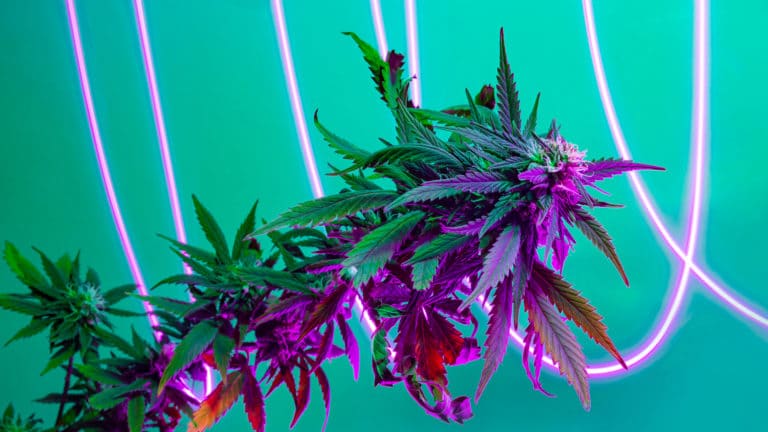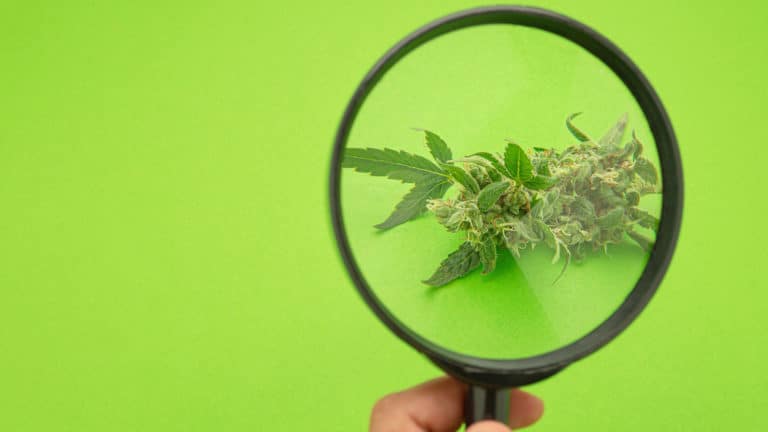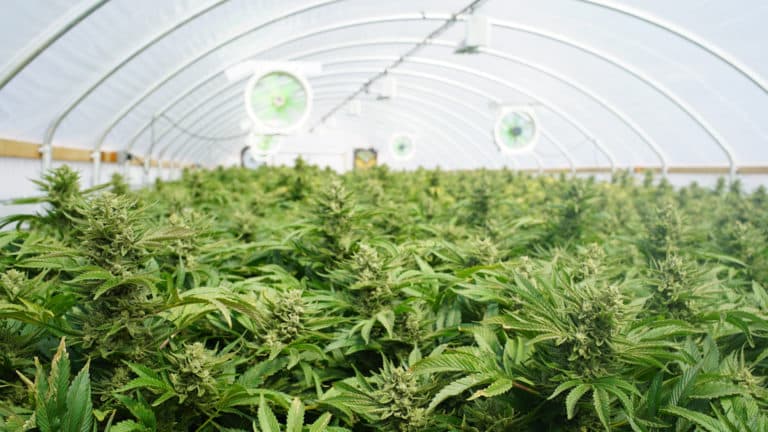By now, most people know a little something about cannabidiol (CBD). It’s hard not to notice the neverending list of items infused with this popular (and legal) cannabinoid. Next to THC, CBD is the most prevalent cannabinoid found in marijuana and the most dominant one found in hemp. Perhaps one you haven’t yet heard of is cannabidiolic acid, or CBDA. Let’s explore how it’s connected to CBD and what benefits it offers.
What Is CBDA (Cannabidiolic Acid)?
CBDA is essentially the mother cannabinoid to CBD. It’s densely found in the trichomes of the hemp flower, and is most abundant in the live plant. However, as soon as the hemp flower begins the drying and curing process, the CBDA starts to degrade. When exposed to heat, such as during extraction, the CBDA will break down entirely, leaving no trace on a lab result. This is when CBD becomes the shining star.
CBDA doesn’t disappear entirely, instead, it breaks down into other chemicals. Processing removes the “acid” from the compound, leaving the CBD behind. Although CBDA is the precursor to CBD, it also comes from another cannabinoid: cannabigerolic acid (CBGA).
CBGA is the true mother of all cannabinoids, acting as the starting point for two additional cannabinoids: Tetrahydrocannabinolic acid (THCA), which converts to THC, and cannabichromenic acid (CBCA) which becomes CBC.
So really, the evolution looks like this: CBGA > CBDA > CBD.
What Is the Difference Between CBD and CBDA?
The easiest way to distinguish between CBD and CBDA is to remember that CBDA is the raw plant. A process called decarboxylation removes the acid from CBDA, and turns it into CBD. There is no CBD without CBDA.
CBDA Effects
CBDA produces many of the same effects as CBD. It fights inflammation, manages pain, calms nausea, and helps promote better sleep.
Does CBDA Get You High?
CBDA is non-psychoactive. Much like CBD, it contains less than 0.3% THC and will not get you high. That said, everyone reacts differently to cannabis products. While you will not get “stoned” as you might by consuming THC from marijuana, you might still experience some mild physical or mental effects, especially in large doses. It’s best to start with a small amount and increase as you feel comfortable and achieve your desired results.
Does CBDA Have Side Effects?
There isn’t much research about the long-term or short-term side effects of CBDA. However, anecdotal evidence suggests that it mimics the effects of CBD. That means that you may feel drowsy or, in some cases, experience mild anxiety with large doses. All cannabinoids have the potential to cause temporary symptoms like dry mouth, changes in blood pressure, and feeling lightheaded.
Will CBDA Cause You to Fail A Drug Test?
Unfortunately, it’s possible to fail a THC drug test when consuming CBDA. Even though you might be ingesting only cannabinoids derived from hemp, most standard drug panels are not yet sophisticated enough to determine the source of origin. When your body breaks down cannabinoids, they are turned into metabolites. Those metabolites are what show up on a drug test. Even though a product may contain less than 0.3% THC, those trace amounts of THC break down into metabolites. Therefore, it’s best to avoid all cannabis products if you have an upcoming drug test.
CBDA Uses and Benefits
Although CBD and CBDA are closely related, they work in different ways. Cannabinoids like CBD typically work by binding to the CB1 or CB2 receptors within the endocannabinoid system (ECS), but CBDA binds to neither. Instead, it works directly with the ECS as a COX-2 enzyme inhibitor. These enzymes trigger an inflammatory response after injury, making CBDA a powerful option for reducing inflammation and pain.
In one study, CBDA proved effective against nausea and vomiting, which means it may be another cannabinoid to add to the arsenal for patients battling cancer. At this time, tests have only been conducted on rats, and more research is needed. Another study showed that CBDA may inhibit breast cancer cell migration.
Research is ongoing to study the full range of benefits, but CBDA may also be helpful in treating or preventing seizures or as a component in antipsychotic medication. Because it does have similar therapeutic effects to CBD, many people opt for CBDA for its ability to reduce feelings of anxiety and depression, manage occasional aches and pains, promote deeper sleep, and help muscular recovery after exercise.
Popular CBDA Products
CBDA is relatively easy to access due to its availability in flower form. It is also active in raw hemp oil and the leaves and flowers of the plant. Some people enjoy juicing the live plant, but if you prefer something a little less interactive or do not have access to fresh hemp plants, check out some of the products you can find on the market.
Capsules
Capsules are an excellent choice for convenience. They travel well, can be taken on the go, and tend to come on slowly but surely. Look for brands that clearly state the milligrams per capsule.
Flower
Grab some hemp and roll up a CBDA joint if you prefer smoking. It’s important to note that CBDA will break down with time, or when it is exposed to heat. Store your CBDA flower in a dark, airtight container and keep it out of direct sunlight.
Topicals & Creams
For on-the-spot treatment of minor aches and pains, a CBDA topical is a great choice. You can typically find one in any kind of format you choose. Salves, lotions, creams, and roll-on applicators are all great options. Consider keeping a topical handy for use after exercise or a big hike to keep stiff joints and muscles at bay.
Tinctures & Oils
Tinctures and oils are the perfect choices when you need something that can get to work quickly. By enacting the sublingual delivery system, tinctures enter the bloodstream underneath the tongue and can take effect in as little as 15 minutes.
Vapes & Extracts
Vape pens and dabbable extracts are an excellent way to get a potent dose of CBDA. Extracts are more concentrated than flower, and each puff delivers more power than a hit off a joint. While dabbing requires special equipment, vape pens are a user-friendly way to try any cannabinoid.
Is CBDA Legal?
CBDA falls into the same legal category as CBD. They are protected under the Farm Bill, so long as the final product contains less than 0.3% THC. This only applies to CBDA products that are derived from industrial hemp. Any product that originates from marijuana is subject to the rules and regulations enforced within states with a medical or adult-use marijuana program. As always, check your state laws here.
Where Can You Buy CBDA?
You can easily find CBDA on many online sites. Simply search for the type of product you want to try and verify that the products are made and sold by a reputable company. Unfortunately, with little regulation surrounding hemp products, there is a lot of snake oil on the market.
To avoid getting scammed, shop for products that provide a full ingredients list on all of their packaging. Hemp extract should be a leading ingredient. Additionally, make sure that the product has been tested by a third-party laboratory and is free of contaminants like mold, mildew, pesticides, or heavy metals. Lastly, make sure the dosage is clearly stated on the packaging. With a little due diligence, you’ll soon be enjoying the many benefits of CBDA.


